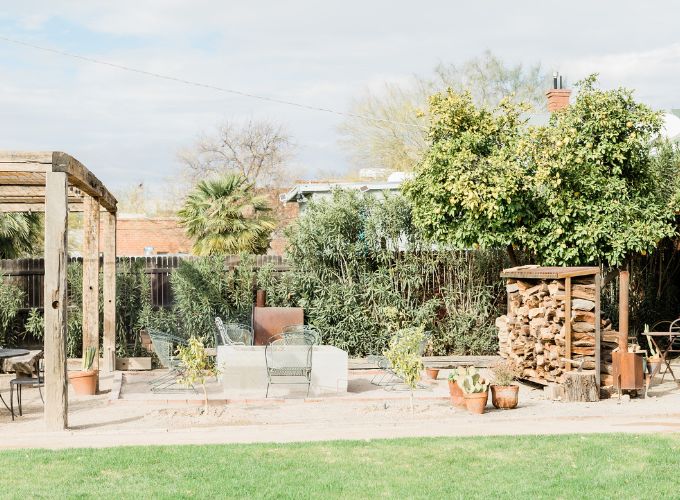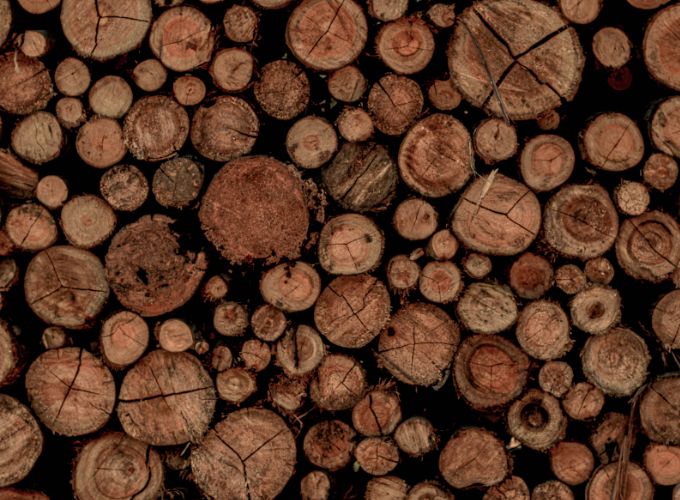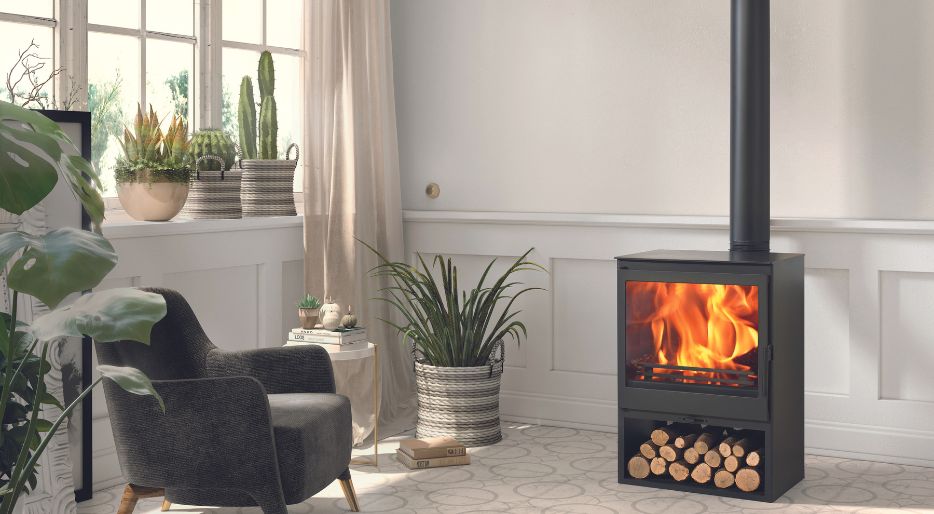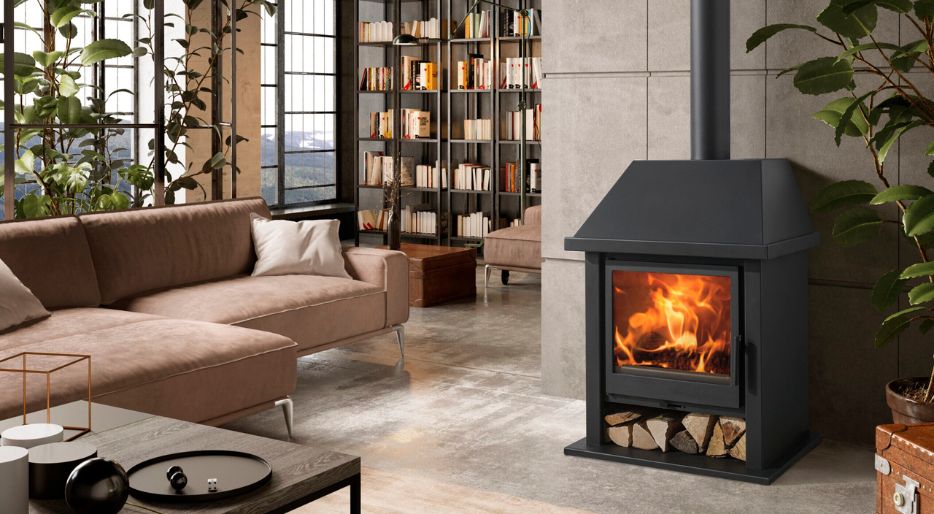Have you ever found your stove wood damaged or cracked? Have you ever wondered how you could fix it without spending a fortune on replacements? Don’t worry, we have the solution for you! In this complete guide on how to repair damaged wood, you’ll learn the steps and techniques necessary to have firewood always ready to use in your appliance. If you’re a person concerned about storing firewood and wood for your stove during the winter, it’s crucial to keep your wood in good condition. Join us throughout this post and find out how to repair damaged wood in an efficient and durable way – don’t miss it!
Why is it not recommended to use badly damaged firewood in your stove?

It is important to understand the dangers associated with using damaged firewood and why it is crucial to repair it before using it in your stove. Here are the main reasons:
- Risk of fire. Damaged firewood containing high levels of moisture can cause inefficient combustion and generate more smoke and creosote in the stove flue. You can read more information about the dangers of creosote by clicking here. Also, if the wood is extremely damp, it may take longer to burn and generate insufficient heat, which will make it difficult to maintain a proper stove temperature.
- Insects and pests. Using damaged firewood that harbors insects or pests in your stove can result in the spread of these unwanted organisms in your home.
- Excessive wear and structural damage. If the firewood is severely damaged, with deep cracks, splinters or excessive wear, its structure and strength may be compromised. Excessive wear can cause poor combustion and affect the stove’s energy efficiency.
- Indoor air pollution. Damaged firewood containing moisture, fungus or mold can release harmful particles and chemicals as it burns in the stove. It is important to have adequate ventilation in the room where the appliance is installed.
Common Causes of Wood Damage
Wood, although a strong and durable material, can suffer various damages over time. It is important to understand the causes behind this damage to effectively address its repair and prevent future problems.
Here are the most common causes of damage to firewood:
- Excessive moisture. Moisture is one of the main enemies of wood. Prolonged exposure to moisture can cause swelling, warping, rotting and even mold and mildew. Remember to use hardwood, with a moisture content of less than 20% and should not be resinous.
- Insects and pests. Termites, woodworm and other types of insects feed on wood, weakening it and compromising its structural integrity.
- Misuse and wear. Misuse of wood, such as overloading it or subjecting it to bumps and scratches, can cause visible damage, such as cracks, splinters and peeling of surface layers. .
It is important to note that before embarking on repairing damaged wood, it is critical to identify and address the root cause of the damage. For example, if the wood is damaged due to moisture, measures must first be taken to control the moisture before proceeding with the repair.
Tools and materials needed
Repairing cracked or damaged firewood logs can be a relatively simple process if you have the right tools and materials. Here’s a list of what you’ll need to make an effective repair:
- Wood filler. Wood filler is an essential product for repairing cracked logs. This substance is used to fill cracks and crevices, thus restoring the structural integrity of the wood.
- Sander. A sander is an essential tool for preparing the wood surface before and after applying the filler.
- Saw. If necessary, a saw will come in handy for cutting and removing damaged sections of the firewood log.
Firewood and lumber storage tips

Proper storage of firewood and lumber not only ensures its good condition and quality, but also helps prevent future damage and the need for costly repairs.
Practical tips for proper storage of firewood and lumber:
- Location and protection. Choose a suitable place to store firewood and lumber, preferably in an area protected from the weather, such as a shed or a well-ventilated warehouse. Avoid direct contact with the ground to prevent moisture absorption and insect proliferation.
- Proper stacking. Stack firewood in piles or shelves, making sure that logs are placed in a stable manner to avoid falling. Leave space between logs to allow air to circulate and help dry the wood evenly.
- Proper drying. Allow freshly cut firewood to air dry for at least six months before storing it indoors. The wood should also be properly dried before use.
- Moisture protection. Cover firewood and lumber stored outdoors with waterproof tarps or use pitched roofs to protect them from rain and snow.
- Regular inspection. Conduct regular inspections of firewood and stored wood to identify signs of damage, such as cracks, splinters or insects.
For more detailed information on how to properly store firewood, we invite you to read our article “How to properly store firewood at home“. In this article, you will find additional information on stacking techniques, moisture protection and other recommendations to ensure that your firewood is kept in optimal condition.

If you have any questions, please feel free to ask us! We hope this post has served as a guide. Take a look at our blog and find solutions and recommendations to help you with your fireplace or wood stove.
Visit our online store for Panadero wood stoves. If you have any questions or need help choosing the right stove, don’t hesitate to contact us. We will be happy to help you.
Articles of interest:
- How to channel the air from a wood-burning fireplace?
- Are wood-burning stove more than a heating accessory?
- Which stove consumes less wood?
- Is it safe to leave the fireplace on while you sleep?
- What are the best wood stoves?
- Is it dangerous to leave a fireplace burning at night?
- Protocol in case of fire with your wood-burning stove
- How to make my fireplace warmer?
Did you like this article? If so, help us spread it 😊 . Click on the buttons below here and feel free to share it on your social networks!
Thank you for reading!
↓ ↓ ↓ ↓





